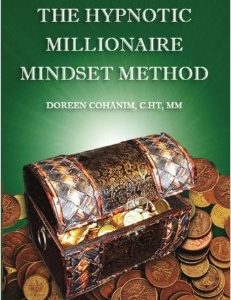Hoardings can affect everyone, and Hypnosis is the real affective solution to help you stop compulsive hoarding, let me help you understand your problem and find the calm and permanent solution before its’ it’s too hard and too complicated to help you.
Two behaviors characterize hoarding: acquiring too many possessions and difficulty discarding or getting rid of them when they are no longer useful or needed.
When these behaviors lead to enough clutter and disorganization to disrupt and threaten a person’s health or safety, and they may lead to significant distress, then hoarding becomes a “disorder.” Simply collecting or owning lots of things does not qualify as hoarding.
A major feature of this behavior is the large amount of disorganized clutter that creates chaos in the home. Such as:
- Rooms can no longer be used as they were intended
- Exits are blocked
Hoarders are collectors where they typically keep their possessions well-organized, and each item differs from other items to form an interesting and often valuable collection.
What kinds of things do people who hoard typically save?
Most people who hoard save almost everything. Often this includes things that have been purchased but never removed from their original wrapper.
The most frequently saved items are:
- clothes
- newspapers
Other commonly hoarded items include:
- containers
- junk mail
- books
- craft items
What contributes to the development of hoarding?
People who hoard often have deficits in the way they process information. For example, they are often easily distracted and show symptoms of Attention Deficit Hyperactivity Disorder (ADHD). These symptoms make it difficult for them to concentrate on a task without being distracted by other things.
Most of us live our lives in categories. But using categories is hard for people who hoard. Their lives seem to be organized by sight and space.
The electricity bill might go on the 5-foot high pile of papers in the living room or buried under the clothing where is all piled up in and everywhere else except in the closet, and it’s to keep it away from a sight as a reminder to pay the bill. The hoarder tries to keep life organized by remembering where that bill is located, but piling things may misplace the bill. And when they need to find it, they search their memory for the location it was last seen. Instead of relying on a system of categories where one only has to remember where the entire group of objects is located, each object seems to have its own category. This makes the process of finding things very difficult once a critical mass of things has been collected.




 November 25th, 2012
November 25th, 2012  doreen.co
doreen.co  Posted in
Posted in  Tags:
Tags: 










 HMI Private Practice of Hypnotherapy Provider
Primary specialty: Alternative Medicine
Secondary speciality: Behavior Therapy
Doreen is an
Honors Graduate of HMI and also a Certified Practitioner /Facilitator of The Melchizedek MethodT (incorporating the Hologramof Love Merkaba). Energy Healer since August 1999, she was healedfrom a car accident preventing back surgery and being able toeliminate her back pain with hypnotherapy and energyhealing
Doreen is an Honors Graduate of HMI and also a Certified Practitioner / Facilitator of The Melchizedek MethodT (incorporating the Hologram of Love Merkaba). Energy Healer since August 1999,...
HMI Private Practice of Hypnotherapy Provider
Primary specialty: Alternative Medicine
Secondary speciality: Behavior Therapy
Doreen is an
Honors Graduate of HMI and also a Certified Practitioner /Facilitator of The Melchizedek MethodT (incorporating the Hologramof Love Merkaba). Energy Healer since August 1999, she was healedfrom a car accident preventing back surgery and being able toeliminate her back pain with hypnotherapy and energyhealing
Doreen is an Honors Graduate of HMI and also a Certified Practitioner / Facilitator of The Melchizedek MethodT (incorporating the Hologram of Love Merkaba). Energy Healer since August 1999,...